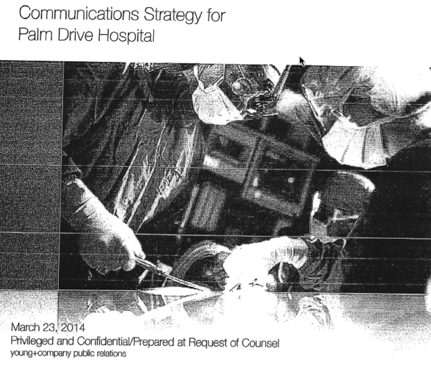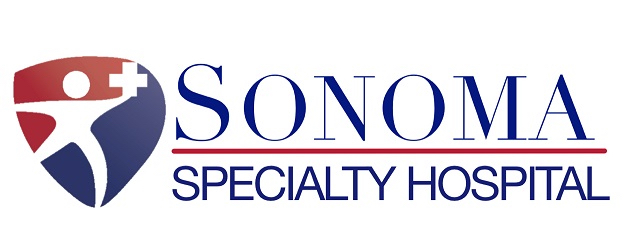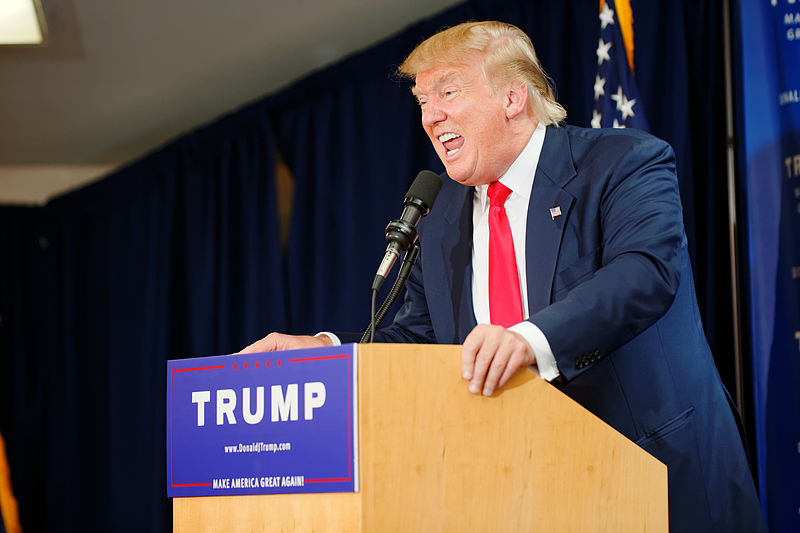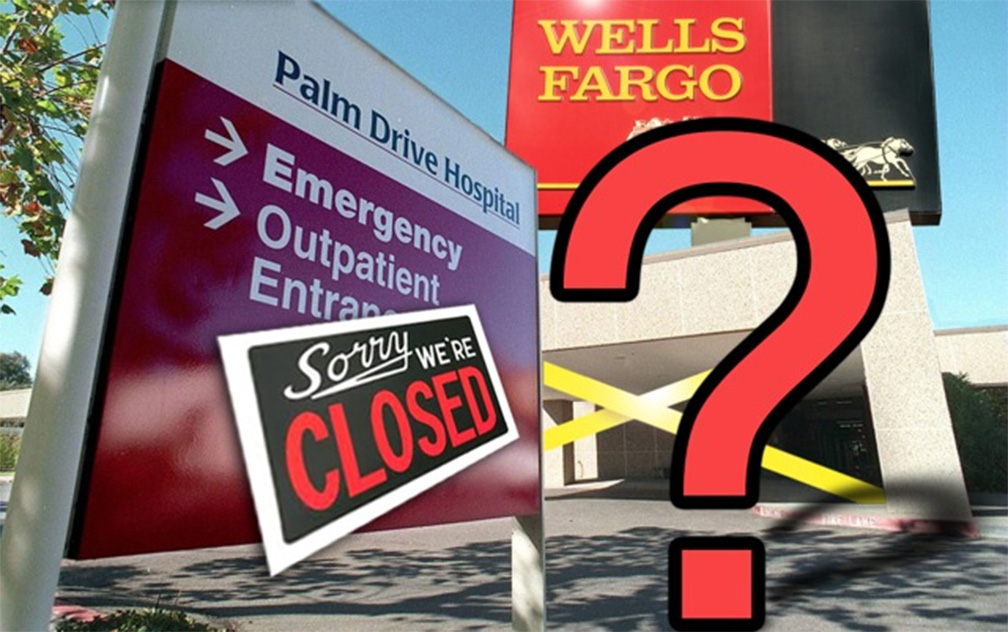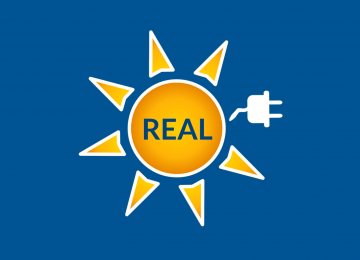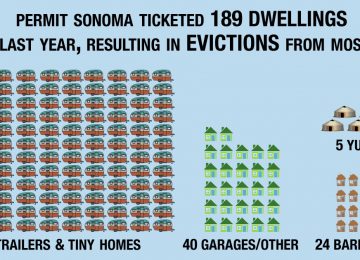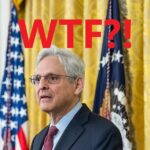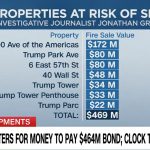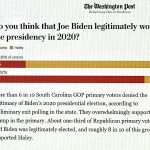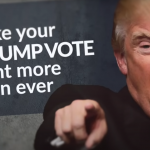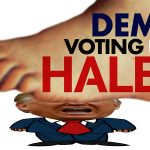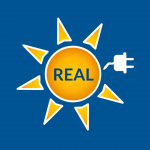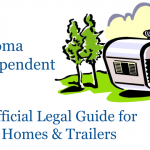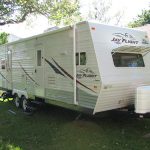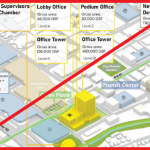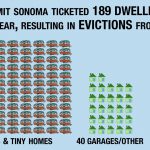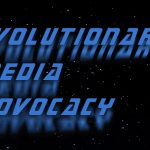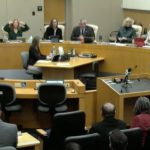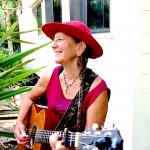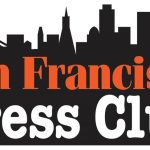(This article first appeared at WaccoBB.net on May 21, 2014; it has been slightly updated to add additional documentation).
The decision last month by Palm Drive’s Board of Directors to reject the doctor-led Foundation Plan that would have kept the hospital open was the moment of truth in the contentious struggle to retain a life-saving emergency room open in West Sonoma County.
Unfortunately for Palm Drive Hospital and for our community, truth was noticeably absent in the reasons given for rejecting the Foundation’s lifeline proposal. Instead, we were provided with misleading legal advice from the district’s $520 an hour bankruptcy attorney—(whose San Francisco law firm also represents, in other matters, Wells Fargo Bank). This advice, which can be seen in exclusive video footage here, appears to benefit Wells Fargo Bank, which is trustee for Palm Drive’s $22.9 million bond portfolio, at the expense of the hospital’s survival.
This advice, which led the board to incorrectly believe it had no choice but to reject the Foundation’s plan, seems to have been part of a secret public relations playbook.
The top goals of this playbook were to “Position the hospital for a quick and easy closure,” and to “Protect the parcel tax income as the hospital closes and reemerges in its new, sustainable form/model.” These goals were apparently determined by Palm Drive’s Board without a single public meeting, a potential violation of California’s Brown Act, which says that such decisions need to be debated openly, with public input.
Palm Drive’s Secret Shutdown Playbook
During my five week investigation into why our community’s beloved, famously caring rural hospital closed (and what will be needed to resurrect it), I became aware of consistently focused message points in the statements made by the hospital’s CEO and Board members, as well as in letters to local media, and a surprising editorial that appeared in the Sonoma West a few days after the hospital closed its emergency room for the first time more than 70 years.
In addition to being a professional investigative, financial and legal journalist, I am a messaging professional, having spent much of the last decade assisting public interest organizations with their messaging and strategies. So I have a keen awareness of professional messaging campaigns, and have been aware that the Palm Drive District Board and its spokespeople, were engaged in one. This Sonoma West editorial titled “Palm Drive Is Dead,” repeated all the core message points of this campaign two days after the hospital closed, on May 1. These were, essentially:
- Palm Drive Hospital is dead and there is nothing that anyone can do to resurrect it. This is the new normal. Accept it and go quietly into its dark night.
- Our community is in mourning and anger is natural, but we should not criticize or second guess the CEO or Board, because they’ve done the best they can.
- The hospital has fallen victim to a national, inevitable trend toward consolidation of emergency services into larger, more efficient, and more competitive mega-hospitals.
- The Foundation plan to keep the hospital open “offers no hope or solid business planning,” and is “full of denial…and tinged by current anger.”
- Our community needs to “reimagine” the facility as a “medical hub” that does not provide emergency room service
- It would be “wrong and foolish” to repeal the Palm drive parcel tax that was voted on in 2004 to support an emergency room and acute care facility.
Last night, my hunch was confirmed, more demonstrably than I could ever have imagined, when I received this Communications Strategy for Palm Drive Hospital March 23 2014 ” The document is dated March 23, 2014, more than a week before the first public meeting was held for the Palm Drive Health Care District’s elected Board members to “consider” closing the hospital (the need for meaningful and transparent public hearings before elected officials make such community-critical decisions is the reason California’s Brown Act was created. The approval of the plan before any public hearing was probably a violation of the Brown Act, and a likely reason that the cover of the plan is marked, “Privileged and Confidential/Prepared at Request of Counsel.” It is signed by Palm Drive’s CEO, Tom Harlan, and Marcus Young, representing Young & Company.
According to the secret communication’s plan for Palm Drive Hospital:
“The goals of the communications strategy will be to:
– Position the hospital for a quick and easy closure, including assisting with employee communications;
– Provide effective and proactive messaging regarding the closure, staffing
reductions, and lay the foundation for a bright future for Palm Drive;
– Protect the parcel tax income as the hospital closes and reemerges in its new, sustainable form/model”
The Plan to Kill Palm Drive Was Approved During Closed Meetings
One disturbing truth about this mysterious shutdown playbook is that it was created and agreed to by Palm Drive’s CEO, and, presumably, its elected Board of Directors, before there had been a single pubic hearing about closing the hospital.
For the Palm Drive District Board, a municipal government agency, to meet in private and decide on closing a hospital, and the emergency room that the District was created to provide, without a single public meeting, seems to violate California’s Brown Act. (The Brown Act says that decisions and deliberations made between more than two elected officials of a governing entity in California need to be made in public).
The first public meeting to announce the bankruptcy of Palm Drive Hospital and its imminent closure was on April 1. The public was given just 24 hours notice, yet more than 250 people crowded the first public meeting on this subject on April 1. Few, if any, of the emotional speakers present supported the closing.
Sebastopol’s police and fire chief soon warned about fatal outcomes if the emergency room closed, and pleaded with Board members to find a way to keep it open. Palm Drive’s doctors immediately began speaking with the Palm Drive Foundation about a plan to keep the hospital open.
A few months earlier, when the Hospital spent thousands of dollars a day to bring in Alvarez & Marshall, an international consulting firm, the highly paid consultants never interviewed the City’s fire or police chiefs, nor did they speak to a single one of the dedicated, highly successful local doctors who managed health care at our renowned hospital. Instead, they looked at the numbers, their downward trends, and mounting payables, and decided that pulling out of a financial death spiral was impossible. They never considered requesting from the doctors, or the foundation, a different strategic model to save the hospital and keep the emergency room open.
Well before the plan to close was announced, Alvarez’s analysts reported to the Palm Drive Board that failure was the only possible outcome. The Board’s job, they were advised, was to hire a bankruptcy attorney, a communications specialist, and another expensive out of town financial advisor specializing in hospital shutdowns (Nobody will answer my question about who recommended these shutdown specialists).
And, as part of the playbook, the District Board and management would make sure that the parcel taxes that Wells Fargo Bank received for the bond holders were not threatened by bad publicity, a public repeal effort by taxpayers not wanting to pay for a closed hospital, or, it would seem—any plan that would keep Palm Drive Hospital open.
The Public Meeting Sideshow
The Palm Drive District Board’s decision to close the hospital was made in secret weeks before the first public meeting. “The District Board had already decided what their votes would be before they had that public meeting,” says John Dierke, a retired SFSU Professor and Dean, who attended three public meetings, and read the Foundation plan cover to cover. “Their review of the Foundation plan was one sided and biased. They were just entertaining the public.”
When I spoke to Sebastopol’s savvy Police Chief Jeff Weaver shortly before the hospital closing, he questioned why the public was not given more advance notice of the closing—and more time to respond to it. Indeed, state law stipulates that a hospital must give their community 90 days notice before shutting down its emergency room. But because of the purported suddenness with which the Board found itself destitute, they got special dispensation from the state to close in just 20 days.
How Protecting Wells Fargo’s Bond Holders Became the Board’s Top Priority
A more troubling problem with the secret communications plan to shutdown Palm Drive Hospital is its objective of “protecting the parcel tax as the hospital closes.” This goal does not seem to serve the public interest the way keeping a life-saving emergency room open does. But it clearly serves the interest of Wells Fargo Bank, as trustee of $22.9 million in hospital bonds.
That’s because protecting the parcel tax from voter recall eliminates the financial losses of operating a closed hospital (which the parcel tax was created to fund), while insuring that $3.7 million in annual parcel tax remains free to pay bondholders, fees to bond trustee Wells Fargo bank, and other creditors.
Young & Company’s shutdown playbook becomes even more suspicious when placed in the context of the misleading legal advice that Palm Drive’s bankruptcy attorney provided to the Board and CEO as a core rationale for rejecting the doctor-led Foundation plan to keep the emergency room open.
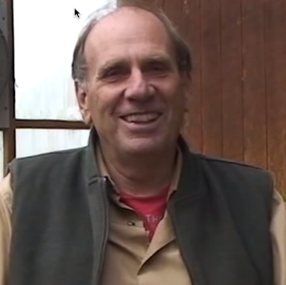
Dan Smith, the hard-edged, controversial philanthropist, businessman, and outspoken critic of Palm Drive Hospital’s Board and management, has spent more nearly $2 million, and thousands of hours of volunteer time, to rescue the hospital from closing twice before. Smith has been a leader in the doctor-led Foundation plan to take over Palm Drive, and he has pledged $1.5 million to support it. Like the doctors I spoke to last month, Smith knew that re-opening a closed hospital would cost far more money than keeping it open, so he pleaded repeatedly with Palm Drive Board President Chris Dawson to allow the doctors group and foundation to take over the hospital operations. According to Smith, Dawson’s reply was always the same: “He said, I can’t do anything other than what my consultants tell me to do. I can’t go against their judgment. They’re the experts, and I’ve got to do that they tell me to do.”
I recently was given this video of the April 23 public meeting at which Dawson led Palm Drive’s District Board to publicly vote to close the hospital and reject the Foundation plan to keep it open. At the controversial meeting, which I attended, Palm Drive’s bankruptcy attorney Michael Sweet publicly advised members of the Board that their “role as a fiduciary” was, to earmark the tax revenues and payables due to the Hospital in order to pay its creditors. At no time during the meeting, or in this video, did attorney Sweet inform the public that his law firm, San Francisco-based Fox Rothschild, also represented hospital bond trustee Wells Fargo Bank. And although he later claimed to this reporter that a conflict of interest waiver had been signed by the hospital, that waiver, Conflict consent May 6 2014 Michael Sweet, was in fact not signed until May 6–two weeks after Sweet made misleading legal comments to both the public, and the Palm Drive District Board.
Sweet advised against the risk of the Board accepting the doctor-led Foundation plan because it proposed that a portion of the parcel tax revenue not due as bond payments would be used for the hospital’s building operations. And that a $1.2 million lump sum reimbursement payment due from Medi-Cal,due in a few months, would also be used to maintain the facility and support hospital operations like keeping the emergency room open. Attorney Sweet told the Board that this made the plan unviable. He said,
“Those funds just aren’t available to startup this new process.What falls on the shoulders…of the board, is your role as a fiduciary, and the knowledge that right now that money is available is the concern that the money could end up being squandered or spent on something that the return isn’t clear and could leave us in a very complicated situation down the road if money was available today to pay the creditors and fund the plan and exit the bankruptcy, and that money is spent in a way that the court might conclude was done imprudently… I think that the board puts itself at risk as a fiduciary for doing that; it could create complications for us in the bankruptcy case going forward.”
The problem with Sweet’s legal advice to the Board is that in a proceeding concerning a municipal entity like a district hospital, a bankruptcy court specifically has no power to “conclude,” anything about how it spends its money performing its public function. In fact, Section 9 bankruptcy code, which Palm Drive’s case is covered under, emphatically stipulates that the bankruptcy court has no power whatsoever to interfere with, or judge, how that municipality uses its funding provide its essential service to the public (nothing is more essential than life saving emergency room services). That’s because Palm Drive’s creditors, of which bond trustee Wells Fargo Bank is by far the largest, cannot interfere with a government entity’s core function of providing services to the public.
According to the US Court’s own website describing Section 9 bankruptcies like Palm Drive’s, (read more on this here)
“Section 904 limits the power of the bankruptcy court to “interfere with – (1) any of the political or governmental powers of the debtor; (2) any of the property or revenues of the debtor; or (3) the debtor’s use or enjoyment of any income-producing property” unless the debtor consents or the plan so provides. The provision makes it clear that the debtor’s day-to-day activities are not subject to court approval.”
So the court would have no position about “squandering” money to keep Palm Drive’s emergency room open. Indeed, the very reason that Section 9 bankruptcy for government entities is different than Section 11 business bankruptcies is to make sure that the financing of government operations cannot be impacted by bankruptcy claims.
Dan Smith pulls no punches when describing attorney Sweet’s intention. “He’s lying and he knows he’s lying. What he says is the opposite of what the law says. Who is driving this? I believe that Michael Sweet is working for Wells Fargo.
His game plan, to the Board, is this: Let’s close the hospital, then preserve all of your cash so we can settle this bankruptcy proceeding quickly, and your bonds won’t be threatened. The PR firm will make sure the public keeps paying their taxes. Then you’d be sitting pretty without that sinkhole of a hospital. You own the building free and clear, you can rent it out, and you’ve got $2 million of tax revenue coming in. You’re in fat city.”
The problem with this shutdown playbook, Smith observes, is that West County’s $155 parcel tax was passed specifically to provide an emergency room and acute care facility, and the Palm Drive Hospital District was created for this clear purpose. “Sweet thinks we’re just a bunch of hicks here in Sebastopol,” Smith says. “That may be true—but we’re a bunch of hicks that read the law.”
Guess Which Mega-Bank Attorney Michael Sweet’s Law Firm Represents?
Michael Sweet’s misleading advice seemed to be part of a shutdown playbook that benefits Palm Drive bond trustee Wells Fargo, at the expense of a public desperate to keep its emergency room open. When I dug deeper into Michael Sweet’s background, I learned that he works for a major San Francisco law firm called Fox Rothschild. A review of Fox Rothschild’s website revealed that Wells Fargo Bank has been one of the firm’s most important clients for expensive appellate cases.
I called Michael Sweet last week to interview him about this apparent conflict of interest. When he returned my call, I said, “Thank you for returning my call. This (Palm Drive’s closing) is a big story here in Sebastopol. Sweet’s reply was immediate. “It’s only a big story to one person,” Sweet replied. By this, he meant Dan Smith, leader of the effort to keep the hospital open.
Given the suffering and anxiety the closing of Palm drive’s emergency room has been causing in West Sonoma County, Sweet’s callous response surprised me. Then, I realized, it was keeping with the messaging of the shutdown playbook, that our community would accept the economic inevitability of this “new normal,” of not having the emergency room that has saved hundreds of lives here in West County for more than 70 years.
When I asked about the conflict of interest for his firm, Fox Rothschild, to represent Palm Drive Hospital while its client list, on major other matters, included Palm Drive bond trustee Wells Fargo Bank, Sweet replied, “Waivers are in place. You’ve only gotten one side of the story.”
Although Michael Sweet initially said he would speak more with me later, he declined my two attempts at follow up interviews, in which I had hoped to learn who signed these conflict of interest waivers (which law firms require new clients to sign when they represent parties with potential conflicts). Was it just CEO Tom Harlan, or did the Board sign them? And why did CEO Harlan, or the Board, or Sweet himself, not disclose the waivers at the public meeting in which Sweet gave his professional advice to the Board and public?
I emailed two Board members to ask whether they had signed, or were aware of this conflict of interest waiver. Nancy Dobbs replied, “I do not recall being informed about a Wells Fargo connection but then, we were all focused so intently on finding a solution rather than closure, that I may well not recall being so informed.”
(A month after this article originally appeared, a public documents request Conflict consent May 6 2014 Michael Sweet, signed by Palm Drive Hospital CEO Tom Harlan–two weeks after the pivotal public meeting in which Sweet acted as an advisor to the Board an public).
How Palm Drive Stayed Open During its Last Bankruptcy
In assessing the question of whose interest was being served by Michael Sweet’s pointed legal advice to the Palm Drive Board, I find it instructive to contrast Sweet’s advice, and the planned shutdown playbook, with what happened the last time Palm Drive’s finances forced it to declare bankruptcy, in 2007.
To that end, I spent an hour on a Saturday morning interviewing David Heaslett, the small town attorney who brought Palm Drive Hospital through its bankruptcy, and through a three year process, until 2010, when the hospital was able to pay its creditors 50¢ on the dollar, plus show a $2 million profit.
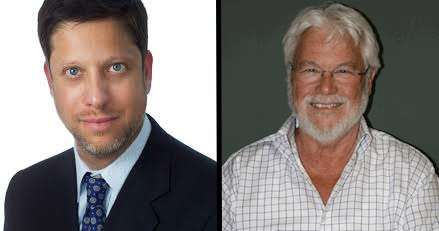
Michael Sweet and David Heaslett
Heaslett is an independent, small town attorney with extensive experience helping at least seven rural hospitals survive bankruptcy. In each case, he has helped them focus on keeping their emergency rooms open, and in most cases, he has succeeded. Heaslett explained what happened in 2007. “First thing I did was secure the bond trustees (at that time it was Bank of New York Mellon, not the current trustee, Wells Fargo), to make sure they would not foreclose. Then I worked on a plan.”
The plan, by an attorney whose firm never represented the bondholders, incorporated all the hospital’s receivables, and all the parcel tax revenue that was not required to pay bond holders to keep the hospital operating. “We found a way to use that money,” Heaslett explained.
I asked Heaslett whether he needed to get the bankruptcy judge to allow this use of revenues for operations while the creditors went unpaid. “Chapter 9 bankruptcy code says that the judge cannot tell the district how to operate,” Heaslett explained. “In all the cases that I have done, we have used some of the future revenue to operate the hospital. The hospital district board makes the decision what the hospital does with its revenue. ”
I am left wondering what might have happened had the Palm Drive Board decided to use David Heaslett to work through their bankruptcy process, instead of a firm that also represented bond trustee Wells Fargo Bank?
What might have happened had the high priced out-of-town consultants hired by Palm Drive hospital not been hired to run their shutdown playbook in our community?
Might the Board have accepted the doctor-led Foundation plan and kept our top-ranked, beloved Palm Drive Hospital open?
A Teachable Moment
My friend Jim Wheaton, a Sebastopol parent and computer programmer who has sat on two local boards and chaired one, had this to say about one of the lessons behind the closing of Palm Drive Hospital.
“A non-profit board trying to make noble decisions needs to understand that if they hire people with vested financial interests in their decisions, they are not going to get good financial advice. They are gong to get advice that furthers the financial interest of those advisers, especially if you don’t investigate their financial interests.”
Communication-Strategy-for-Palm-Drive-Hospital
Corrected-Transcript-Palm-Drive-Board-Meeting-Michael-Sweet-comments-April-23-2014


